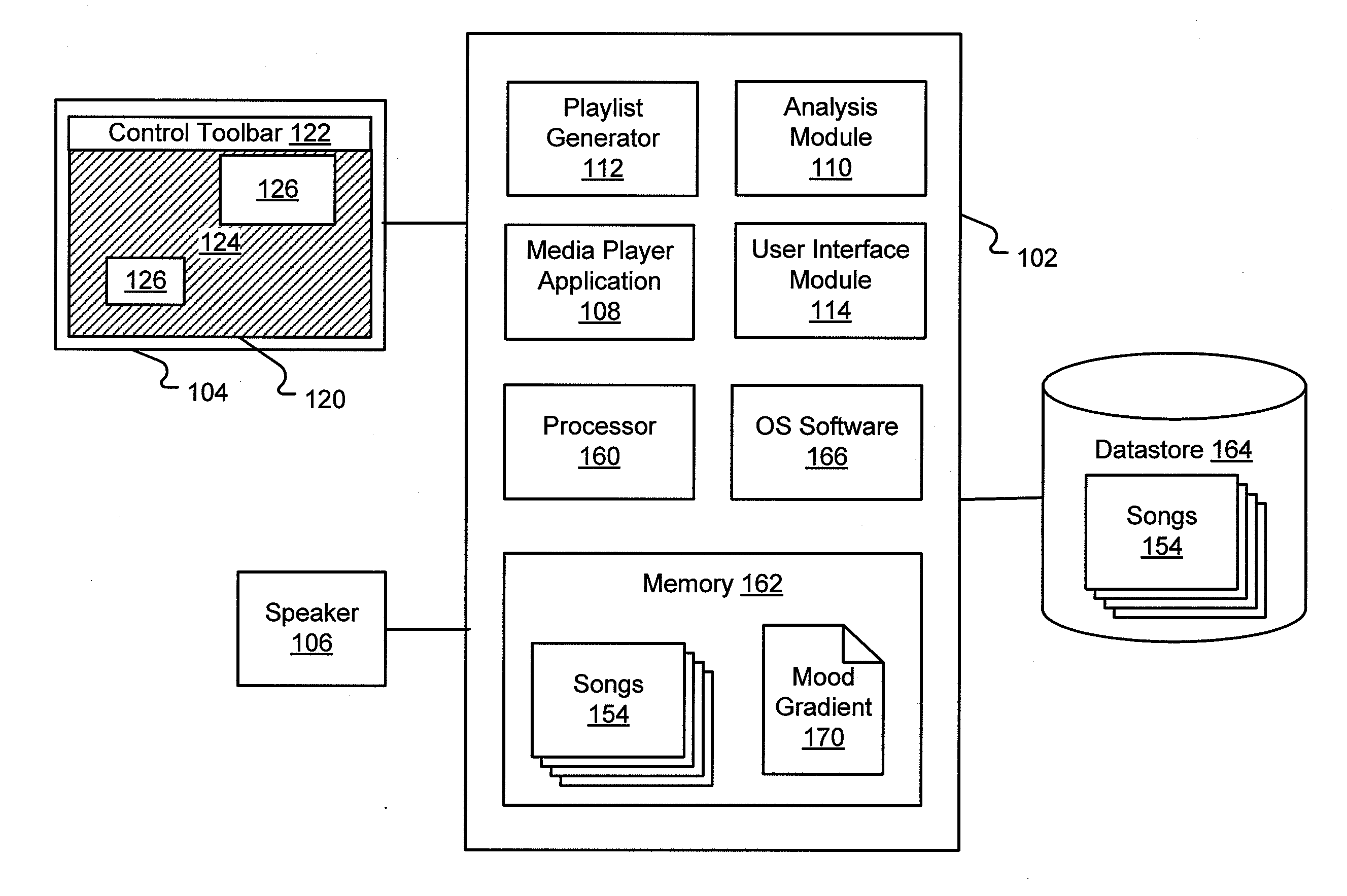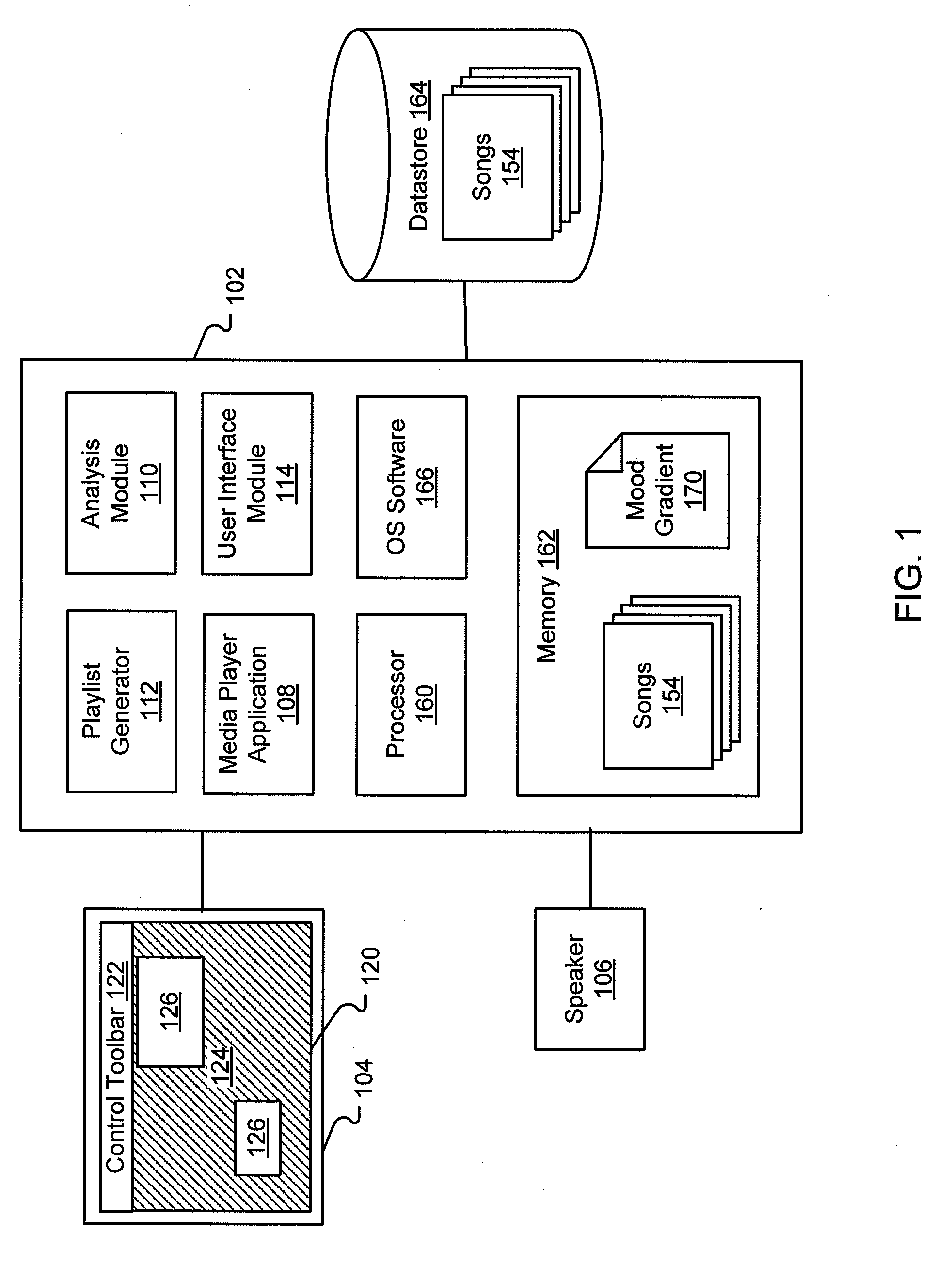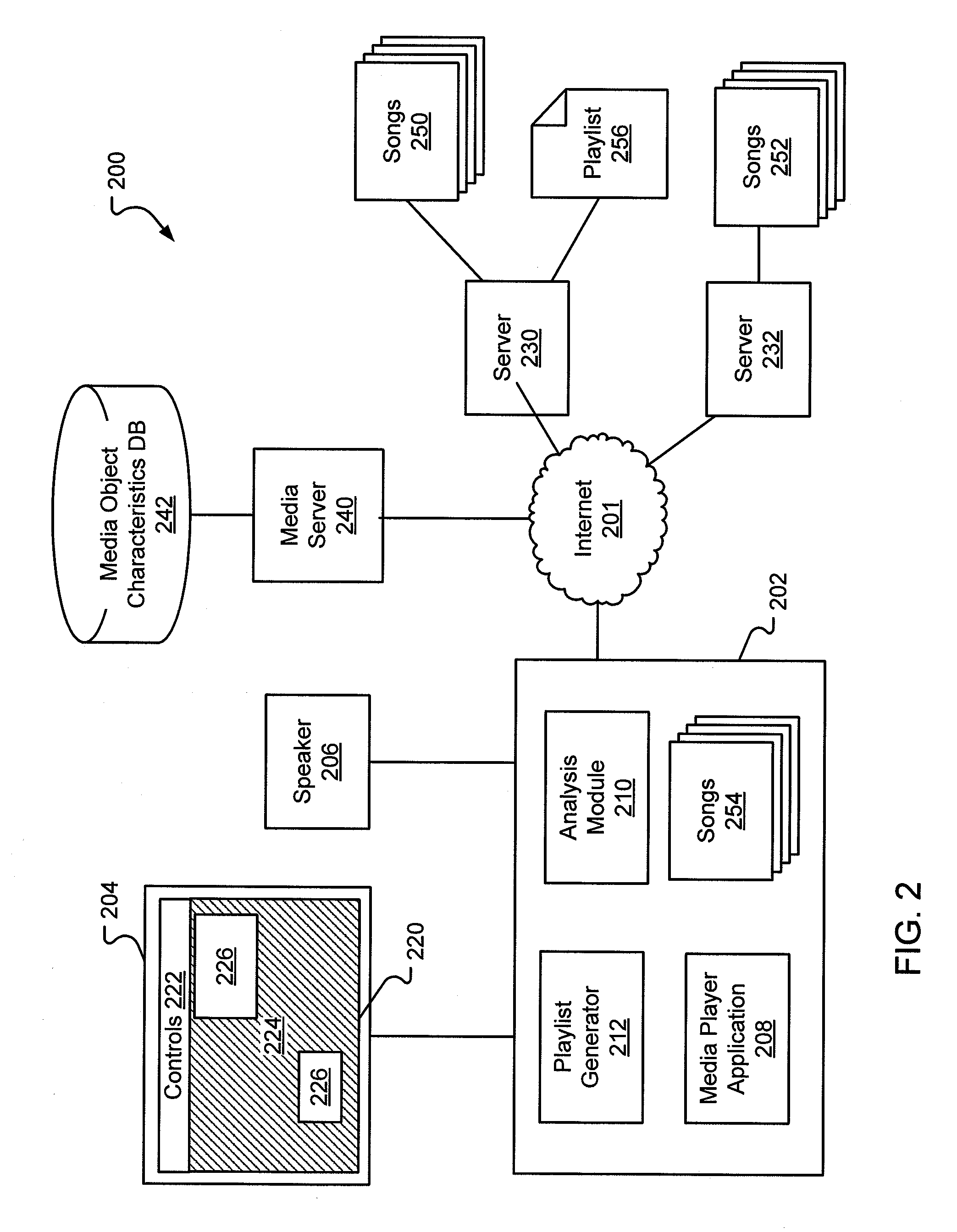System and method for generating a playlist from a mood gradient
a mood gradient and playlist technology, applied in the field of system and method for generating playlists from mood gradients, can solve the problems of web media objects which are poorly annotated or lacking any type of metadata whatsoever, and users can only experience media which they are able to find
- Summary
- Abstract
- Description
- Claims
- Application Information
AI Technical Summary
Benefits of technology
Problems solved by technology
Method used
Image
Examples
Embodiment Construction
[0035]Systems and methods for presenting media information to users that fosters discovery of new media and a media discovery interface are disclosed herein. The content of the media is analyzed in order to determine at least three different objective characteristics of the media. Each of the items of media (media objects) are then displayed to a user, via a media discovery interface, as if they were in three-dimensional space with each dimension corresponding to one of the characteristics. The media objects are located within the space based on their values for each of the characteristics. The media discovery interface allows users to visually see media objects that have similar content and thereby be alerted to the existence of media objects that the user may be interested in. Furthermore, the interface includes additional novel functionality such as showing a path through the three-dimensional space linking media objects that are to be played in a playlist and allowing the user t...
PUM
 Login to View More
Login to View More Abstract
Description
Claims
Application Information
 Login to View More
Login to View More - R&D
- Intellectual Property
- Life Sciences
- Materials
- Tech Scout
- Unparalleled Data Quality
- Higher Quality Content
- 60% Fewer Hallucinations
Browse by: Latest US Patents, China's latest patents, Technical Efficacy Thesaurus, Application Domain, Technology Topic, Popular Technical Reports.
© 2025 PatSnap. All rights reserved.Legal|Privacy policy|Modern Slavery Act Transparency Statement|Sitemap|About US| Contact US: help@patsnap.com



